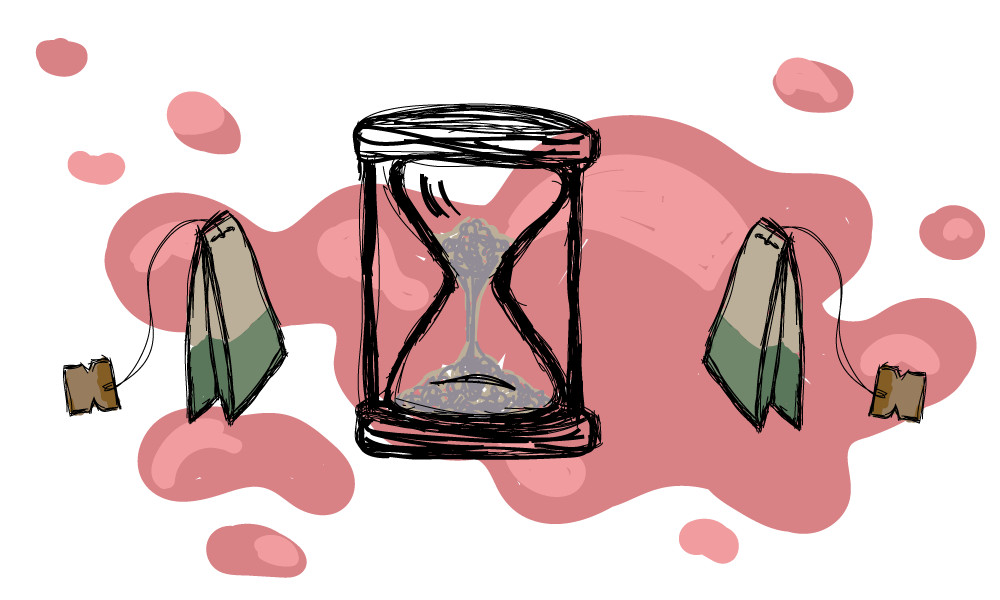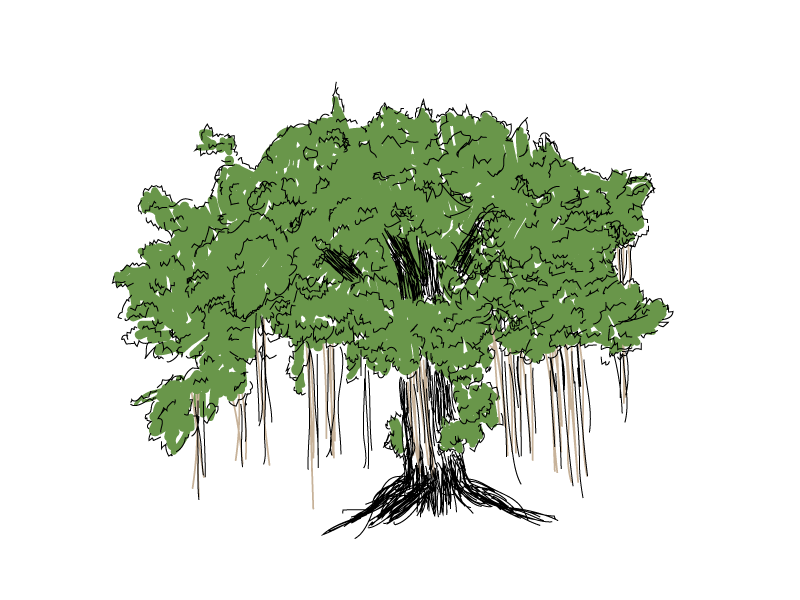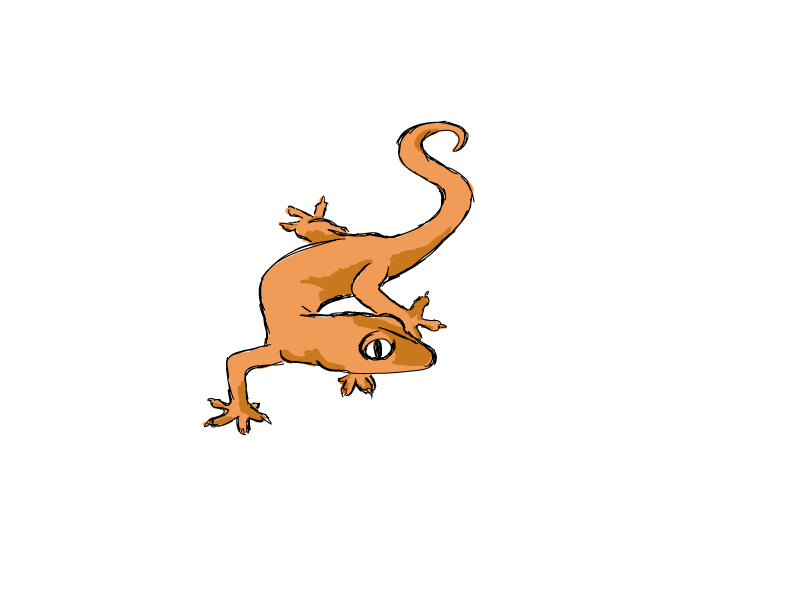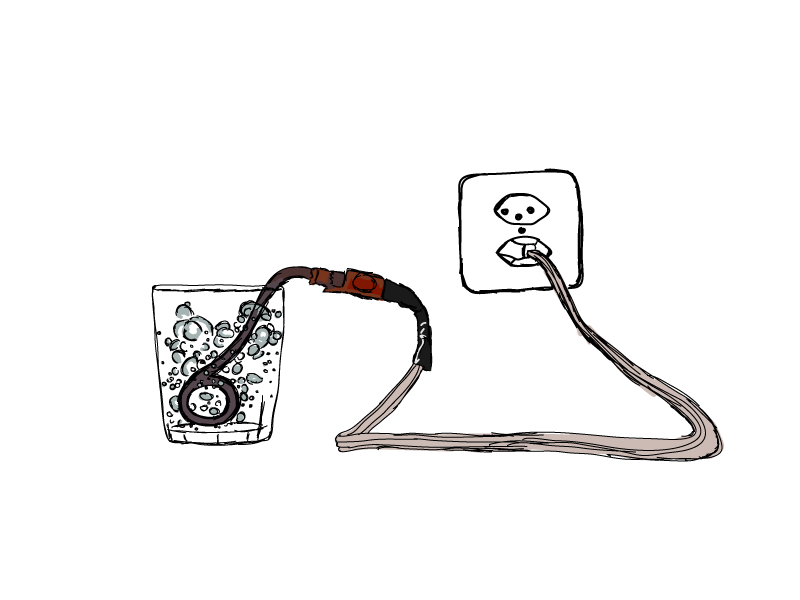I arrived at the artists’ residency late in the afternoon with a small suitcase, my computer, and my notebook. Located in the outer reaches of New Delhi, the residency offered space to eight writers and visual artists to work for up to two months. If you’d asked me, I’d have said I had big plans for my three weeks there, but the truth was my timing was off; I’d just completed a novel before coming to India to visit family and begin a new project. I needed to do research, but I wasn’t sure what that research would look like. Books? Interviews? Archival material? Uncertainty reigned. Furthermore, I hadn’t factored into my plans how helpful family members, with their insistence on driving me places or offering up their car and driver, often added time to the process, as I scheduled my outings around their busy schedules.
It was almost dusk when my cousin dropped me off at the residency. Dusk and dawn are the worst times to drive, with their shifting light and shadows, the contrast between the light sky and dark road hard on the eyes. Arriving at a new destination in this smoky light with its blurred edges and deep shadows induces a specific kind of terror. I’m not afraid of the dark, but I do have a terrible sense of direction and can’t read maps. For this reason, my first rule of travel is to arrive in the clear light of day. I orient myself by landmarks; in the dark, I grope around like a blind person with no guide, off course and confused.
The residency was a large compound which housed two museums, gallery space, a dormitory, a library, and workspace for artisans working with clay. There were eight individual studios for artists and writers; four units shared a common backyard. At the entrance loomed a huge banyan tree with drooping branches growing into the ground, already in shadow. I had no idea where I was going as I followed the porter across a vast open space, over a dried-up pond. A mangy but well-fed dog trotted behind us. The porter carried my box of Bisleri water: I was recovering from a stomach virus and didn’t want to take a chance on the filtered water the residency provided. I carried my small, minimally packed suitcase and my computer. It didn’t occur to me to bring anything other than clothes and my work, as I planned to do nothing other than sit at my desk all day.
The porter pointed to the building where I’d eat dinner at 8:30 and deposited my box of bottled water on a long, L-shaped counter to the left of the front door. Plugs everywhere gave the impression of missing appliances: a refrigerator, a dishwasher, a toaster. A built-in drying rack sat above a sink. The studio was big and airy, with windows that did not fit their frames. A set of stone steps lead up to a narrow sleeping loft, or mezzanine as they called it. The bed was narrow, situated under a row of windows with broken screens. Tucked next to it, a tiny bathroom with its own water heater, a toilet, and a bucket for bathing. The towels provided were stiff and worn, and the bed was hard. At the foot of it sat a dresser with shelves instead of drawers and doors that didn’t quite close. Next to the bed, a narrow end table wobbled. A simple desk lamp provided the best light in the whole room.
A folder with information awaited me on the small desk where I sat down to write as soon as the porter was gone. I feel like I have made a big mistake. What am I doing here? . . . My studio is huge and scary — cavernous really, me with my tiny little bag and my box of Bisleri. Nothing to boil water with. A constant stomach ache. At least I have the Cipro.
What I didn’t have was Doxycycline, having reasoned that in December most of the mosquitoes would be dead and that rubbing my exposed body parts in neem oil, which smelled like rancid nuts to me, would be sufficient to prevent malaria. I didn’t have my fleece pants and wool cardigan, having left those at my uncle’s house. I didn’t have any books, except the one I was reading, appropriately titled The End of Suffering. The majority of the pages in my notebook were blank, and when I sat down at the desk to begin working — because what else to do in that space between arrival and dinner, when the light was fading and strange noises (birds? rats? lizards?) were starting to come from the bushes just outside the studio — I realized I had old drafts of an essay I’d just sent out for publication and none of the notes I’d made on my new project, a project I could barely articulate to myself. My notes were at home, in Pittsburgh.
The high ceilings, the narrow loft, the dim overhead light, and the empty surfaces in the kitchen made me small and rootless even though I was supposedly home. This wasn’t my first or even my second or third time coming to India. My uncle and aunt were a phone call away. Still, I felt like I’d walked into the wrong frame of this particular movie.
Why am I here?
The sun disappeared and darkness filled the corners of the room. A lizard scurried along the white stucco wall, disappeared behind the curtain above the ground-floor window. I lit a mosquito coil, the familiar smell a comfort. Typically, you can’t light these in small spaces, but in that large room, I felt immune to the poison it emitted, the smoke disappearing as it rose from the kitchen counter. Giving up on the desk — which was an occasional table, the kind found in narrow household hallways — I moved up to my bed where the lighting was better and wrote in my journal as I waited for dinner time. I’d missed tea time, both at my uncle’s house and now here at the residency. I didn’t have any Doxy or fleece, but I did have impeccably bad timing.
My journal for that first week is a chronicle of discomfort. The stomach ache, the lack of light, the inability to find a focus for my project, the cold stone floor, the men beating the bushes at night for what unseen terror, I never found out. A day or two after I arrived, a cold front descended from the Aravali mountain range. Winter entered the studio through the spaces between window and sill. Like every other place in New Delhi, the studios lacked central heating, and during the day I tried to warm up by sitting outside in the winter sun, its glow weakened by haze and pollution. In the courtyard, I wrote in my notebook and read, moving as the sun moved. I wrapped myself in a shawl and waited for the dining room to serve tea — in addition to three meals, we were supposed to get tea twice a day, but more often than not, tea appeared in the late afternoon, the morning forgotten. Served from a big thermos, the milky tea never felt hot enough, no matter how early I arrived.
After the Irish writer next door told me he worked in bed all day, I took to wearing my flannel pajamas under a pair of loose cotton pants and climbing back into bed in the afternoon when the sun began to weaken. I wore every bit of clothing I had and planned a trip to my uncle’s house several miles north — at least an hour in a taxi, if not more — to retrieve the wool cardigan and fleece pants. My list for the market included: Odomos (mosquito repellent), biscuits, wedding outfit, immersion heater, mug. I can’t remember whose wedding the outfit was for. My uncle promised to give me an immersion heater, so I put off buying one. But when I returned to the house, no immersion heater waited for me. Instead, I found my elderly aunt going through old photographs.
“This was Labhu Ram,” Auntie Nimmi said, pointing to a young man in a turban standing next to my grandfather, who at 14 already dressed like an Englishman — collared shirt, tailored pants and jacket, spiffy pointed shoes. Sepia-toned, a bit worn at the edges, the photo was otherwise in good condition. “He was a scoundrel, a terrible man.” After telling me the story of Labhu Ram, Auntie started to tear up the photo.
I stopped her. I didn’t know why Auntie Nimmi’s photographs mattered, only that I needed them with the same urgency I need the immersion heater.
She seemed surprised — and grateful that someone should want them and the stories that went with them. I’d come to collect an immersion heater and get back to work; instead, I settled in and listened to Auntie talk, which she did. With my uncle, aunt, and cousin at work, we had the whole afternoon to ourselves, and the stories came, one after another, as I labeled the photos and tucked them in my bag. Afterwards, when my other aunt came home, we had our usual tea in Auntie Nimmi’s bedroom, brought to us by the servant, along with the requisite biscuits. I said nothing about the photos and neither did Auntie Nimmi.
At the residency, one of the departing Australians gave me his leftover Doxycycline and an extra blanket. No one had an immersion heater or knew where I could get one. I worked in bed some more, and then finally, during my next visit to Auntie Nimmi, I went to the local market and purchased a kettle.
At the studio, along with a box of tea bags and a bag of powdered milk, the cheaply made kettle assumed its place on my vast stone counter. I had a tin for my biscuits, to ward off potential pests, though I had yet to see one of the rats I heard, or thought I heard, at night. I made tea in my newly acquired mug, ignoring the little plastic cups nested inside the kettle. Instead of climbing back into bed, I moved the bedside lamp down to my desk and pored over the photos Auntie had given me. The room was not any warmer. I tacked up a photo of my grandmother bent over her sewing onto the huge white bulletin board on the wall in front of me. Dressed in a pale sari, sitting on the floor, she filled the frame. In another photo, Auntie Nimmi sat at a Singer sewing machine, her white salwar billowing under the table as her feet pressed the foot pedal.
After dinner, I filled the bucket from my bathroom with hot water and soaked my feet while drinking some herbal tea. I poured the extra hot water from my kettle into the bucket. Outside, the resident peacock howled like a cat in heat. Around 11, the beating of the bushes began, tempered by the distant sound of thumping disco music. It was wedding season and around us old farms had been turned over for these events.
That night I slept in my wool cardigan and fleece pants, and when I woke, I wrote in my journal this morning, I feel okay. At 11, I made some tea and shared it with my neighbor, who had moved her table out to the back, where she worked in the morning sun. After she left, I remained outside and read and wrote, finally warm, finally comfortable.
I can’t describe the mug I drank from nor can I tell you how many cups of tea I consumed. I do remember the kettle clearly — thin metal, black plastic base — and the brown plastic cups that came inside it. My journal confirms that it was after this kettle entered my life that I was finally able to settle into a work routine that made sense to me. The photos of my ancestors watched over me as I dunked biscuits into my tea, something I’d done countless times at my grandparents’ dining table, at my parents’ table, and then, when they’d all departed, at my sister’s table. Social and intimate, tea began our mornings and punctuated long afternoons that drifted until dinner. Tea was part of the fabric of family life, woven into our daily routine, and without it, I had been adrift.
12 days into the residency, my notes shift from my discomfort to the stories Auntie told me. These stories and the photos would become part of my book, the book launched at this residency over the course of many cups of tea. Several times a day, I filled the kettle with water from a squat thermos of filtered water — once early morning, once around 11, and then once in the afternoon, around three or four. I made my tea, laid out three or four Marie biscuits on a plate purloined from the dining room, and carried both cup and plate across the cold stone floor to my desk. I sat at this desk every day and stared at the big white bulletin board on the wall in front of me. The board was the size of a throw rug, about six by nine, a vast white expanse which would remain mostly bare for my residency. My computer and notes took up most of the desk space, which had the width and functionality of a warped coffee table.
Able to keep myself warm and fed, I stayed in my seat, which is, of course, the first rule for writers. Although the music from the weddings at the farm next door kept me up all night and I still worried about the guards beating the bushes under my windows with their sticks, complaints about the cold disappeared.
I never would find out what lurked in the bushes at night. The week following the acquisition of the kettle, I felt good enough about my progress that I went to Lajpat Nagar market with the Austrian and English artists, a market far too fancy for bargain-loving Auntie Nimmi. I purchased two wedding outfits, which I still have and must have worn: shiny, beautiful suits, one with embroidery and sequins, the other a deep pink shot with gold thread. I still cannot remember wearing them. My journal doesn’t reveal this. It does, however, note cups of tea made and how time passed as I tried to find a frame for the story I still didn’t know, a story about my mother and her family that a pile of photographs saved from the trash would one day tell me. •
All images created by Emily Anderson.








